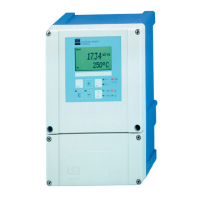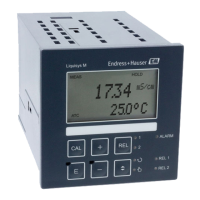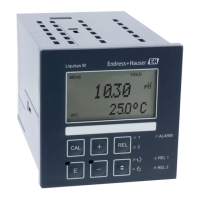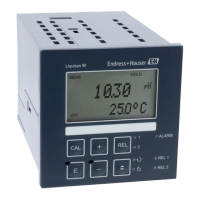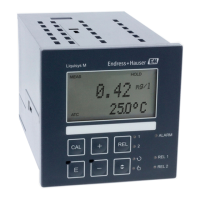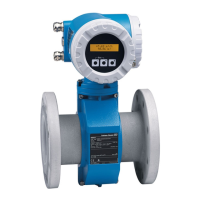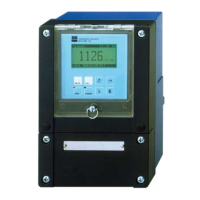Commissioning Liquisys M CLM223/253
60 Endress+Hauser
The measurement is performed in the following steps:
• The transmitter determines the uncompensated conductivity and the water temperature.
• The transmitter rounds the temperature off to the nearest 5 °C and compares the
measured conductivity with the associated value in the table.
• If the measured value is larger than the value in the table, an alarm is triggered (E151).
EP-PW function: The following table lists the temperature-dependent limit values for
"Purified Water" (PW) in accordance with EP; this table is also programmed into the
transmitter.
Temperature [°C] Conductivity [µS/cm] Temperature [°C] Conductivity [µS/cm]
0 2.4 60 8.1
10 3.6 70 9.1
20 4.3 75 9.7
25 5.1 80 9.7
30 5.4 90 9.7
40 6.5 100 10.2
50 7.1
The measurement is performed in the following steps:
• The transmitter determines the uncompensated conductivity and the water temperature.
• If the temperature is between two table entries, the limit value for the conductivity is
determined by interpolation of the two neighboring points.
• If the measured value is larger than the limit value, an alarm is triggered (E151).
Early warning: A USP early warning is also available. This is activated at a configurable
switch-on point (e.g. 80 % of USP/EP limit value). This means that the user is alerted to be
able to regenerate the plant in time. Der Voralarm wird in Feld R262 bzw. R272
eingestellt.
Please note the following:
• The device must be equipped with a relay card and the Plus Package to be able to use the
USP and EP function.
• To output an alarm, enable the fault-signaling contact or the error current in field F5 -
F7 (error code E151 and E153).
• The switch-off point of the pre-alarm is 1 % below of the switch-on point (R262 /
R272), related to the main limit value.
• The transmitter also uses the uncompensated values for the USP and EP function when
it displays temperature-compensated values.
• The limit value of 100 °C (212 °F) is used for temperatures over 100 °C (212 °F).

